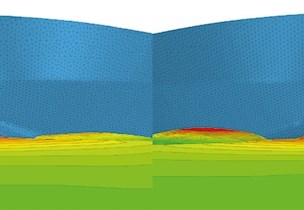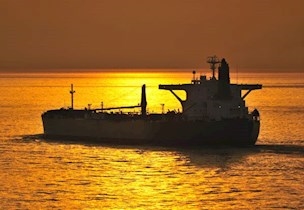Energy Efficiency Existing Ship Index (EEXI) regulation determines the shipowner´s license to operate vessels
Do your vessels comply with the EEXI regulations from IMO? If not, CFD simulations may give you the best compromise between installing energy-saving devices or reducing the speed of your vessel.
The International Maritime Organization (IMO) has set goals to reduce greenhouse gas emissions including CO2 emissions. As of January 2023, all ships are required to calculate their Energy Efficiency Existing Ship Index (EEXI). If the values do not comply with the index the shipowners may lose the license to operate their vessels.
Many existing vessels are currently not able to fulfil the requirements and must take necessary precautions to continue operation.
CFD calculations help shipowners comply with the IMO regulations
If the shipowners need to make energy-saving changes to their vessels, they need to know if the corrective actions are enough to be able to comply with the new IMO rules. Computational Fluid Dynamics (CFD) is a tool that is approved by IMO as well as by the classification societies to calculate the result of the corrective action to find out if it will fulfil the regulations.
FORCE Technology's CFD services may:
- Calculate the present EEXI number for the vessel
To calculate the EEXI value, an accurate speed and power curve is needed to determine the Vref value. The accurate speed and power curve can be obtained by either towing tank tests or by sea trial which are both very expensive and time-consuming. The Vref value can also be predicted at the required loading condition by CFD calculations which are a lot faster and considerably less expensive.
- Show performance with engine/shaft power limitation (EPL/ShaPoLi)
In case your vessel does not meet the EEXI requirements, EPL/ShaPoLi will be required. By reducing the speed of the vessel, it consumes less fuel oil and thereby reduces emissions. Based on the CFD calculations, the limitation of the power can be easily defined to fulfil the EEXI requirements. The drawbacks of choosing the power limitation solution is the potential lack of being able to operate the vessel profitably. If the transportation time is increased considerably the lack of interest in chartering the vessel is increased accordingly.
- Show performance with various energy saving devices installed
If the power limitation solution is not profitable for your vessel, consider installing energy-saving devices to comply with the EEXI regulations. Instead of actually installing the devices CFD simulations will help you decide which options will be the most profitable solution for you. That will save you time for selecting the device, dry-docking your vessel for installation, and subsequent sea trial to determine the exact EEXI value.
Finding the best compromise between engine power limitations and energy-saving devices
Based on our extensive knowledge we provide a 360 degrees consultancy based on a variety of databases with many hull data, data of various energy-saving devices, etc.
CFD is the better option compared to performing the actual change immediately without knowing the obtainable results. It is a very time-consuming process to install changes as the ship owner needs to plan dry docking of the vessel, buy, and install the device and furthermore perform either towing tank tests or sea trial tests to obtain proof of the energy saving.
Our CFD simulations are validated against benchmark hulls and are performed following the ITTC guidelines for CFD simulations.
Please do not hesitate to contact us to discuss the best possible options for your vessels to comply with EEXI.


Services

pH simulation of marine scrubber discharge
A quick and flexible model to document compliance with the marine scrubber discharge regulations.

Hull line optimisation
Improve the flow around the hull.

Get help to calculate EEXI and CII ratings
The vessel carbon intensity index (CII) is a step towards decarbonising international shipping.

